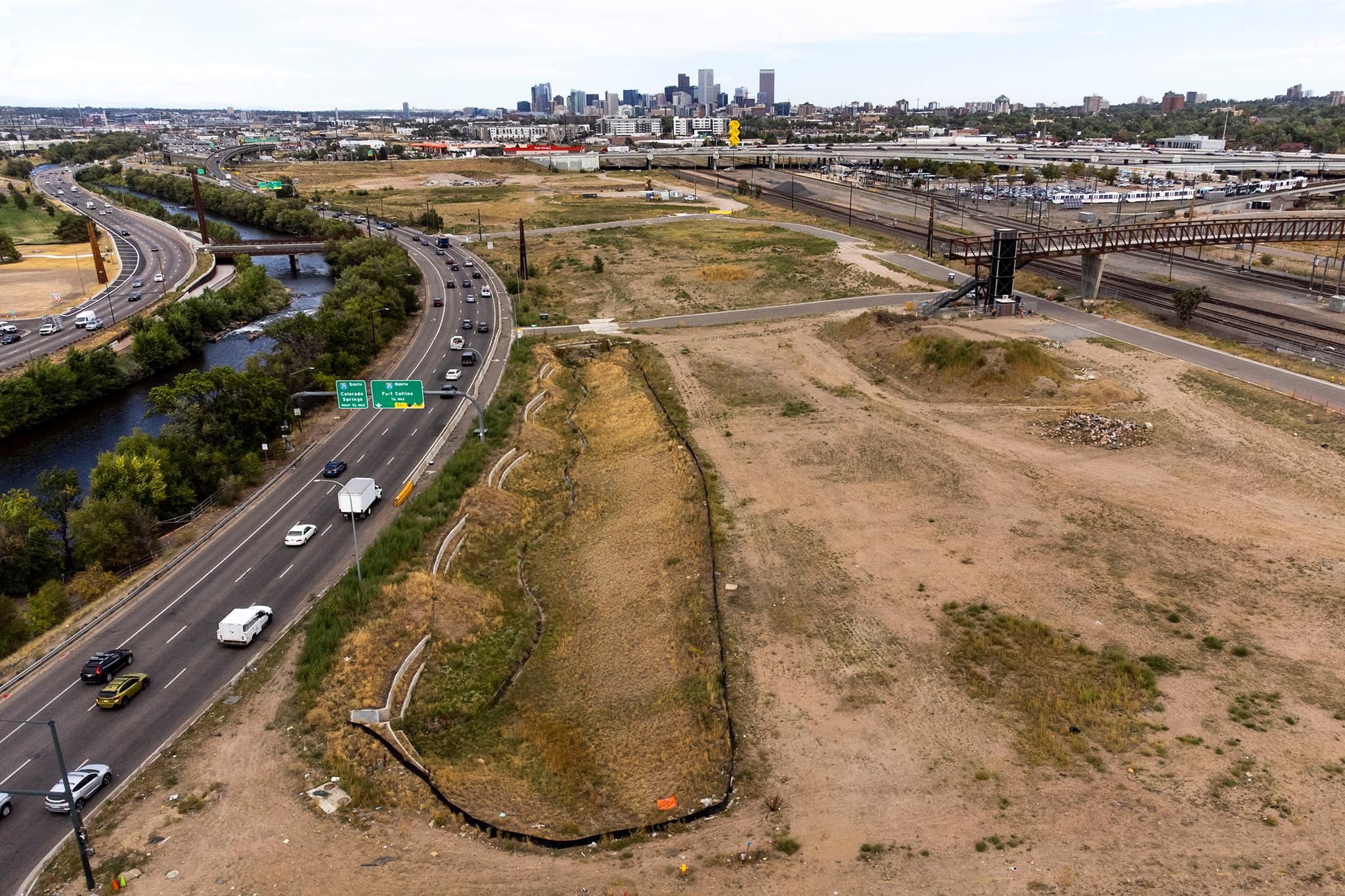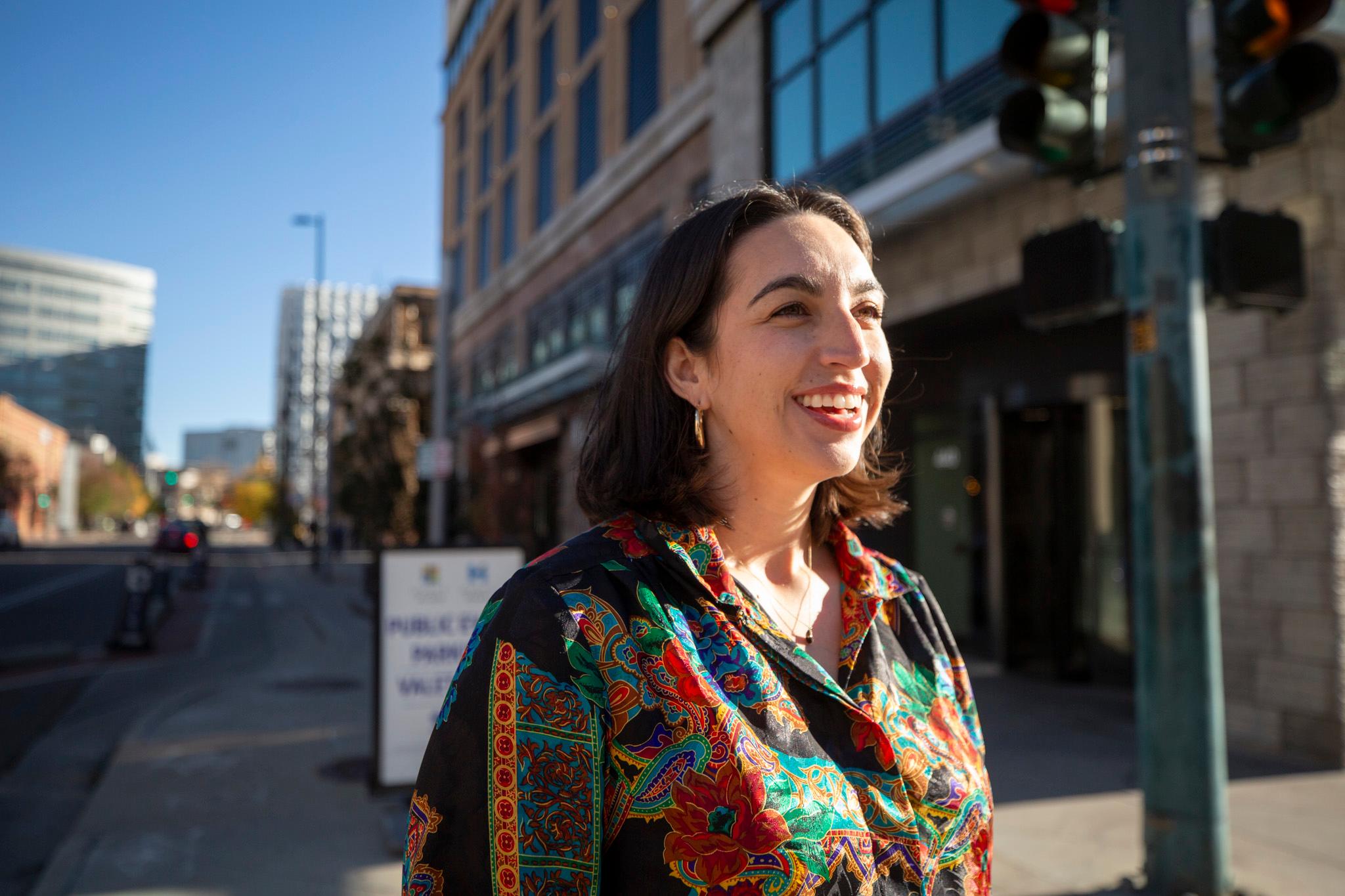
Every week, Denverite’s Readers’ Choice series delves into topics selected by the public.
Here is the running list of stories that we've written based off of topics voted for by our readers and questions that we've received.
Do you have a question about Denver that you've always wanted answered? Use the form below to ask us! (Fill out the form here if you're viewing on mobile).
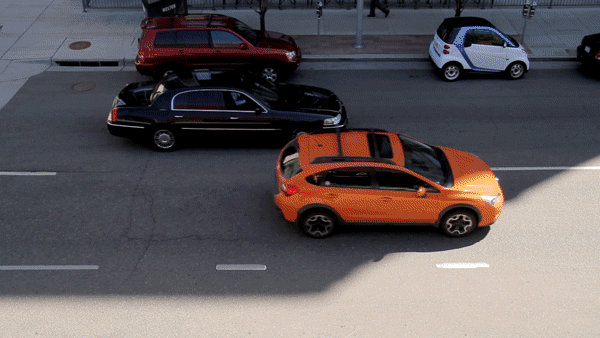
DENVER'S GROWTH
"Where do people who move to Denver come from and how long do most stay in Colorado?"
• The majority of Colorado's residents are transplants who were born in other states and countries. Here's where they're from.
• Among 50 metropolitan areas, Denver ranks second when it comes to new people moving in and it also ranks second when it comes to people moving out.
"How does Denver's cost of living compare with other major cities/similar-sized cities in the U.S.?"
Here's how cost of living in Denver compares to Washington, D.C., Portland, Austin and Seattle.
"It might be interesting to hear some debunking of the 'everyone who has moved here in the last few years is a stoner' myth."
• Do people move to Colorado for legal weed? Probably not, but no one knows for sure.
• Out of 1,500 surveyed people moving to Colorado and the other seven states where recreational pot is legal, about 5 percent mentioned legal marijuana while discussing their move.
"In a city of transplants, how does Denver foster neighborhood identity?"
Ask a Native: How can a transplant be a good neighbor?
"Does City Council have any plans to address the cost of living through rent regulation?"
With each new headline about rising rents in Denver, you hear again the lament: “We need rent control.” Here's why Denver doesn’t have rent control and probably never will.
"How can middle-income earners still afford to live here, buy a house, etc.?"
• Most Denver millennials want to buy a home, but the biggest obstacle was unaffordability.
• Median-earning African-American and Hispanic people in Denver could afford fewer than 2 percent of homes for sale in 2016. White households could afford 8.3 percent of for-sale homes, based on the median income figures.
• Mobile home parks are one of the last remaining forms of affordable housing. Here's what would happen if they completely disappeared in Denver.
"Seems to me, if City Council allowed folks to build more homes — without parking — affordability wouldn't be such an issue, so it'd be interesting to see someone get to the bottom of this disconnect."
Denver is adding parking requirements to a controversial zoning provision, but this problem won’t be an easy fix.
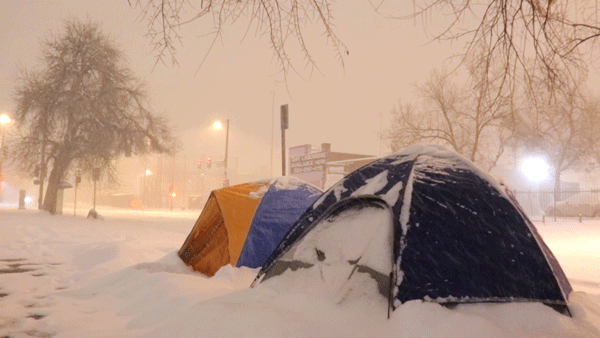
HOMELESSNESS
"What percent of Denver’s homeless population is chronic vs. transient? Of the chronic homeless, what percent is due to mental illness?"
There are just over 1,000 chronically homeless people in the Denver metro — that's the highest number in at least a decade and represents about 20 percent of the metro's 5,116 homeless people (according to the latest survey of local homelessness). About 56 percent of Denver's chronically homeless population reported a mental illness. Here's what the city is doing about it.
"What has worked in other cities to alleviate homelessness? Could that work here?"
• Different kinds of tiny home projects are quickly gaining popularity as an alternative to traditional homeless shelters and have popped up in cities like Portland, Seattle, and now Denver.
• Denver’s new Day Works program, which hires people — including many who are experiencing homelessness — to work in parks and on other public property, was inspirited by a similar, smaller effort in Albuquerque, and the city of London also offers training in jobs like shoe-shining. Otherwise, very few governments have gotten into the business of directly employing homeless people.
"What's the state of homelessness in Denver?"
• In 2004, John Hickenlooper, then the mayor of Denver, created an organization called Denver’s Road Home. Its goal was to end homelessness here by 2014. That didn’t happen. Now, Mayor Michael Hancock has the new Office of HOPE (Housing and Opportunity for People Everywhere) with the goal of coordinating services to get people into housing.
• There were an estimated 10,550 homeless people in Colorado in 2016. While the federal government estimated that the number of people experiencing homelessness nationwide had declined, Colorado's homeless population increased by six percent.
"What has changed about homeless populations and programs in the last 10 years?
"Three out of four homeless people work, and that’s something that has changed even in the last five years."
"What is it like to be homeless in Denver?"
• One challenge of being homeless is keeping your clothes clean for work. Here’s a simple, effective solution that just hit Denver’s streets: a $90,000 mobile laundromat.
• The Colorado Coalition for the Homeless found that 171 people from the Denver homeless community died in 2016. Here's what happened.
• After living at a youth homeless shelter in downtown Denver, two young women documented their experiences with struggling with housing.
• Fifteen children whose families are living out of Colfax Avenue motels or Salvation Army shelters worked with mentors to photograph what they hoped to achieve — from going to college and becoming a police officer to living in a home and helping other homeless children.
• What’s the difference between an “urban traveler” and a homeless kid? Not much. But there really is a group of traveling young people who loop between Denver and other cities. They don’t call themselves “urban travelers,” but they might say “gypsy” or “traveler.”
"What is the city doing about homeless sweeps?"
• There have been many developments from early 2016 through 2017 with Denver's urban camping ban, which prohibits people from using any shelter on Denver’s streets. Kevin has documented the controversy for over a year and has broken down what you should know.
• A group of homeless men suing the city of Denver over how it handled their belongings during a series of homeless sweeps last year were granted class action status, which means the case can be used to determine whether the city’s policies violate the rights of homeless people as a group.
• Homeless advocates and activists have repeatedly called for the city to suspend enforcement of the camping ban, but city leaders like City Council President Albus Brooks have said that “repealing the camping ordinance doesn’t help us put homeless individuals in a better situation.”
"There is so much conversation about the homeless who can be seen, but what are the numbers on the invisible ones, and are they being passed over in terms of aid?"
"I am a retired librarian and a Denver native whose family has lived here for nearly a hundred years. The specter of homelessness is always with me, even though I have worked most of my life. My retirement funds were swallowed up by medical bills for illness and an injury. I was terminated from my last position for a workplace injury that has left me in chronic pain. I now live entirely on Social Security." Here's what that means for Susan Dean.

PUBLIC TRANSPORTATION
Here's what Denver public transportation is like, according to a radio host, a councilperson, and the owners of a bike shop and a cafe
"Why is Denver public transit so expensive?"
• The average Denver transit user spends about 4.4 percent of their income on commuting. That’s above the national average of 3.6 percent.
"How many people actually use the train to the airport?"
There were approximately five million A Line passengers in the first year of the line’s operation. Here are five more statistics that show what the first year of the train to the plane looked like in Denver.
"I hear that RTD is working with Uber to solve the last mile issue in southern Denver. Do they have plans to expand these services or looking into other means of solving the last mile issue?"
Last August, Centennial started offering free Lyft rides to get more people to the Dry Creek light rail station. The idea was that by operating alongside those boring old Call-n-Rides, the city could reach three times as many people for the same cost. But instead of tripling ridership, the pilot actually had roughly one-fifth of the Call-n-Ride 2016 weekday average, and each ride cost more than twice as much.
"Why doesn't Denver have smart cards?"
As of June 2017, everybody can finally pay RTD fares with a smart card.
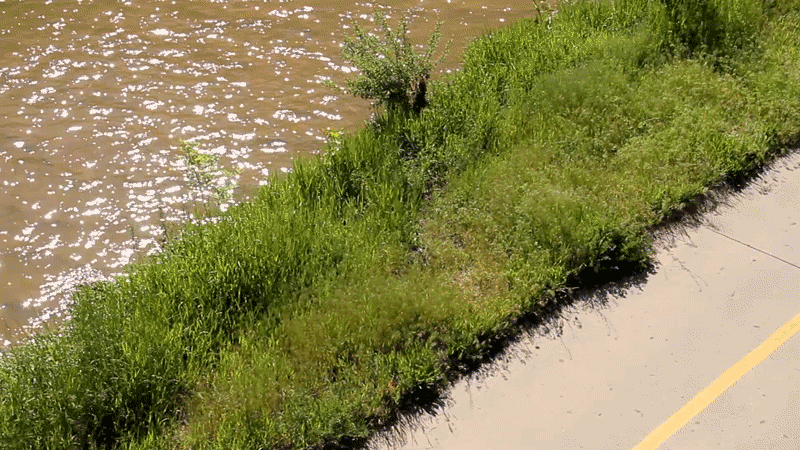
BICYCLISTS AND PEDESTRIANS
"If bicyclists are going to share the road with cars, shouldn't they have to follow the same traffic rules? Are there any penalties if they don't?"
Bicyclists in Colorado are generally subject to the same traffic laws and punishments as drivers at signals and stops. However, cyclists argue that they should be legally allowed to roll through stop signs as long as it's safe to proceed since so many do it anyway. In fact, a recent study by DePaul University found that only 4 percent of cyclists fully stop at stop signs, and only a third stop at traffic signals when there’s no cross traffic. Update: The "Idaho Stop" or "Safety Stop" has since been legalized in Colorado.
"What are the demographics of the areas where new bike lanes are being implemented?"
• Wealthier areas aren’t more likely to have more bike lanes on the whole. And poorer areas don’t necessarily see fewer lanes aimed at cyclists on the whole either. Likewise, a higher percentage of white people in a census tract doesn’t always mean there are more bike lanes there.
• Here's a visual tour of Denver's newest bike lanes.
"Can residents be required to fix sidewalks in disrepair?"
Homeowners and businesses are supposed to pay for repairs to the sidewalks near their property. A new "sidewalk fee" of $150 for most property owners will pay for fixing and extending some sidewalks.
"Why are sidewalks so erratic, uneven, and out of place?"
Maybe you trip on them, maybe you hate them, but there’s no denying that Denver’s flagstone sidewalks are distinctive. The reason why Denver has so many goes back to the 1880s.
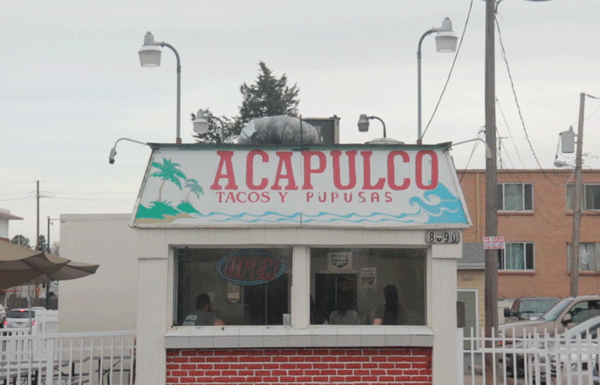
FOOD
"What are the best/highest-rated regional cuisines in each 'hood?"
• It’s all but impossible to know how anyone defines authentic food, at least in terms of flavor and technique. Here's what local chefs think about what makes food "authentic," and where to find it in Denver.
• Here are the best restaurants to go to on East Colfax and Federal Boulevard, according to the locals.
• We put together our own suggestions for the best spots in Denver, from food to art and more.
"Where can I find a list of all Denver farmers markets?"
Here's everything you need to know about Denver-area farmers markets
"Where are food deserts in Denver and what is being done about them?"
Here’s where Denver’s food deserts are, and what the city is doing about them.
"How successful has the city been in attacking the issue of food deserts?"
• Former Mayor Michael Hancock made it a priority to get a grocery store in Denver’s Globeville, Elyria-Swansea, Westwood and Montbello neighborhoods. His Office of Economic Development set $3 million aside to fulfill that purpose.
• Denver kicked in another $100,000 as part of its latest effort to address food insecurity in Globeville, Elyria-Swansea, Montbello, Westwood and other areas where access to groceries is limited.

WEIRD DENVER
Cults: Remember that time Denver fell in love with a guy who tore up flags and declared himself the new Jesus?
Basements: Most Denver homes have basements, and many of the ones that don’t are condos. OK, that's not really weird, but we didn't have anywhere else to put it.
Death: Here are three stories about Riverside Cemetery, Denver's oldest.
Those mysterious stone pillars scattered around Capitol Hill and other Denver neighborhoods are tie-up spots for horses, made of flagstone.
"Are there active neon-sign makers in Denver? What's being done to preserve existing installations?"
Denver’s iconic neon signs are in danger of vanishing, but there’s still hope for preservation with help from a local movement to "Save the Signs," including Seth Totten — who’s been bending neon since 1990 and has owned Acme Neon Signs in the Cole neighborhood for about 11 years.
"What is the deal with the KPOF (Pillars of Fire) building near the Capitol Building?"
There’s a building on Sherman Street just old enough that you might not notice how odd it is: the KPOF building, more officially known as Alma Temple. The “POF” in KPOF stands for Pillar of Fire, an Evangelical sect founded in Denver by Alma White, a feminist who turned out to be more popular than her minister husband. Also, she was quite racist.
"Who decides on what public art is purchased/displayed and how are pieces distributed throughout the city?"
The same wave of development that has filled Denver with “fugly” apartment complexes and lookalike dudes also has indirectly sprayed the city with public art that is by turns unusual, controversial, ugly and inspirational. Here’s how it works, along with the price tags on every modern piece in the city’s public art collection, which includes about 400 pieces total.

NATURE AND SCIENCE
Flowers: Here's how the Denver Botanic Gardens has used its archive of pressed flowers and other plants to study climate change.
Bugs: Westminster's Butterfly Pavilion collects data that helps scientists understand what butterfly species are present in Colorado, which in turn helps them understand the overall health of nearby ecosystems.
"Which lakes have beaches? Which lakes allow swimming, and what seasons? What lakes can you place a row boat, canoe or kayak into?"
Here's a summer guide to lakes that are easily accessible from Denver and what you can do there.
"What kinds of awesome things are people in Colorado doing to get humans to space?"
• OPINION: You are not sufficiently awed by the process of shooting a man from Colorado into space.
• As the spacecraft Juno hurdled past Jupiter in May, University of Colorado Boulder professor Fran Bagenal was watching for a phenomenon she’s studied throughout her career: the aurora.
"What kind of urban wildlife are around Denver?"
• Here are wildlife photographers’ five favorite places to spot wild animals like bison, eagles and big-horn sheep near Denver.
• Every year, like clockwork, we hear about people whose cars are disabled by rabbits and other varmints near Denver International Airport. Here's how to prevent that from happening to you.
• Sometimes, there are deer that run around Denver's City Park. Apparently, it's not a big deal.






